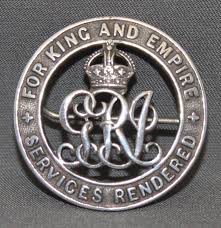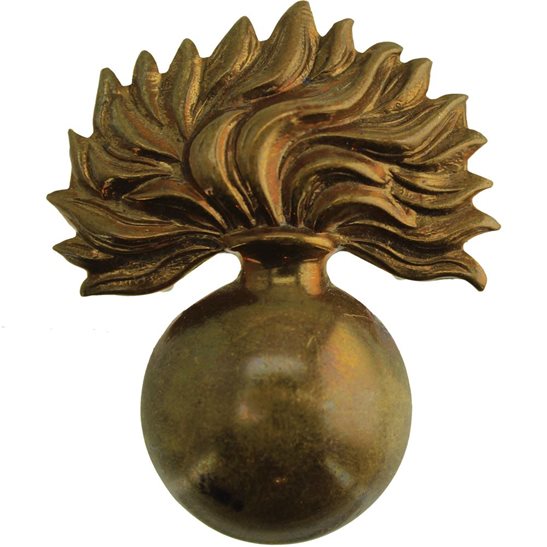Personal Details
Born: 31 January 1897.
Family: The third son of George Alfred and Margaret Ann Porter of 4 Egerton Road, Whitchurch, Shropshire. Charles married Lizzie Eddies in 1924.
Civilian Occupation: Prior to enlisting he was employed as a labourer; in 1939 he was a shop assistant in a bakery.
Residence: In 1939 they were living at Dukes Cottage, Overton, Flintshire, Wales.
Died: In 1969 aged 72.
Military Details
Regiment: Grenadier Guards
Rank: Private
Service Number: 24349
Date of Enlistment: 1 November 1915
Date of Discharge: 15 December 1916
Reason for Discharge: Physically unfit for service
Other Information: In 1916 during the battles at the Somme he received gunshot wounds that resulted in his early discharge from the army.
Charles was awarded the Silver War Badge and Campaign Medals (British War Medal, and Victory Medal).

The British War Medal (also known as 'Squeak') was a silver or bronze medal awarded to officers and men of the British and Imperial Forces who either entered a theatre of war or entered service overseas between 5th August 1914 and 11th November 1918 inclusive. This was later extended to services in Russia, Siberia and some other areas in 1919 and 1920. Approximately 6.5 million British War Medals were issued. Approximately 6.4 million of these were the silver versions of this medal. Around 110,000 of a bronze version were issued mainly to Chinese, Maltese and Indian Labour Corps. The front (obv or obverse) of the medal depicts the head of George V. The recipient's service number, rank, name and unit was impressed on the rim.
The Allied Victory Medal (also known as 'Wilfred') was issued by each of the allies. It was decided that each of the allies should each issue their own bronze victory medal with a similar design, similar equivalent wording and identical ribbon. The British medal was designed by W. McMillan. The front depicts a winged classical figure representing victory. Approximately 5.7 million victory medals were issued. Interestingly, eligibility for this medal was more restrictive and not everyone who received the British War Medal ('Squeak') also received the Victory Medal ('Wilfred'). However, in general, all recipients of 'Wilfred' also received 'Squeak' and all recipients of The 1914 Star or The 1914/1915 Star (also known as 'Pip') also received both 'Squeak' and 'Wilfred'. The recipient's service number, rank, name and unit was impressed on the rim.

The Silver War Badge was issued in the United Kingdom and the British Empire to service personnel who had been honourably discharged due to wounds or sickness from military service in World War I. The badge, sometimes known as the "Discharge Badge", the "Wound Badge" or "Services Rendered Badge", was first issued in September 1916, along with an official certificate of entitlement.

